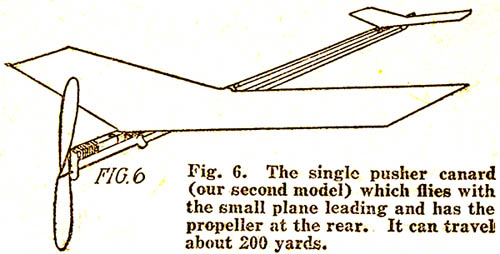A Toy Factory
Today, toys for us kids to play with. The University of Houston's College of Engineering presents this series about the machines that make our civilization run, and the people whose ingenuity created them.
The extent of the toy aisles is daunting near Christmas. As the shelves go on and on, they set me to thinking about life back in my Paleolithic past. The 1930s often found me walking aisles looking for toys. But they were aisles of hardware and drug stores.
That's where I spent my allowance on the sulfur, saltpeter, and carbon needed to make gunpowder -- on solder, glue, twine, alcohol and acetone. But, even before I was old enough to haunt those stores, my personal toy factory supplies had lain in the corners and crannies of my own home.
I've just rediscovered my first book of things-to-make, and it brings back Christmas past. This was my constant companion in the 1930s. Much of it frayed away during the long hours it spent at my elbow in our basement workroom. Cover, end pages, title page, and index -- all gone. Only the brown and flaking pages inside remain.
The materiel for my toy-making enterprises consisted of wooden spools, discarded patches of silk; paper clips, lumber fragments; rubber bands, paper, several kinds of glue; linen thread, matches, and old inner tubes. Everything had some use.
And what was on our minds to make? How about parachutes? The army was still developing parachute tactics. Smoke jumping lay five years in the future. But parachutes were regular fairground entertainment -- a daredevil's tool. So, let's make a parachute.
I cut a large circle from that discarded piece of silk. I cut a hole in the center. It lets some air escape to stabilize the descent. I tie lines of strong linen thread around the edges, and connect the other ends to a lead soldier. Roll it up tight, soldier on the outside, and use my slingshot to hurl it into the sky. On the way down, the lead soldier unrolls the pack until the chute opens and buoys majestically back to earth.
Then there was the spool tractor. I'd cut notches around the flanges on each end of a wooden spool so they looked like toothed gears. Then I'd carve a washer from soap, fit it over the hole at one end, tie a rubber band to one end of a matchstick, thread the rubber through the washer and the hole, and anchor it with a piece of matchstick at the other end. Wind up the long matchstick, set the spool on the rumpled bedclothes -- and it became a tractor with powerful ability to climb over obstacles.
We've been told to be careful what we wish for. This old book carries its own implicit warning against wishing. One November, I found a mechanical tractor in the Ward's catalog for the then-huge sum of $1.65. But I so wanted it that I prevailed on my parents.
When the tractor appeared at Christmas, my wish promptly crumbled. This shiny store-bought toy climbed no better than my spool, and its spring broke after a few uses. But the greater problem was, it held none of myself. What stores offer is fulfillment of someone else's dream. And, I realized, I had my own dreams to fulfill.
I'm John Lienhard, at the University of Houston, where we're interested in the way inventive minds work.
I cannot reference this book since the cover and title page are gone. But Click Here for a large image of one of the things it shows how to make. Two more images below.


This toy airplane is a surprise. You'd think it was meant to fly to the left. It is, however, a canard design like many of the airplanes by radical designer Burt Rutan. The propeller pushes it from left to right.